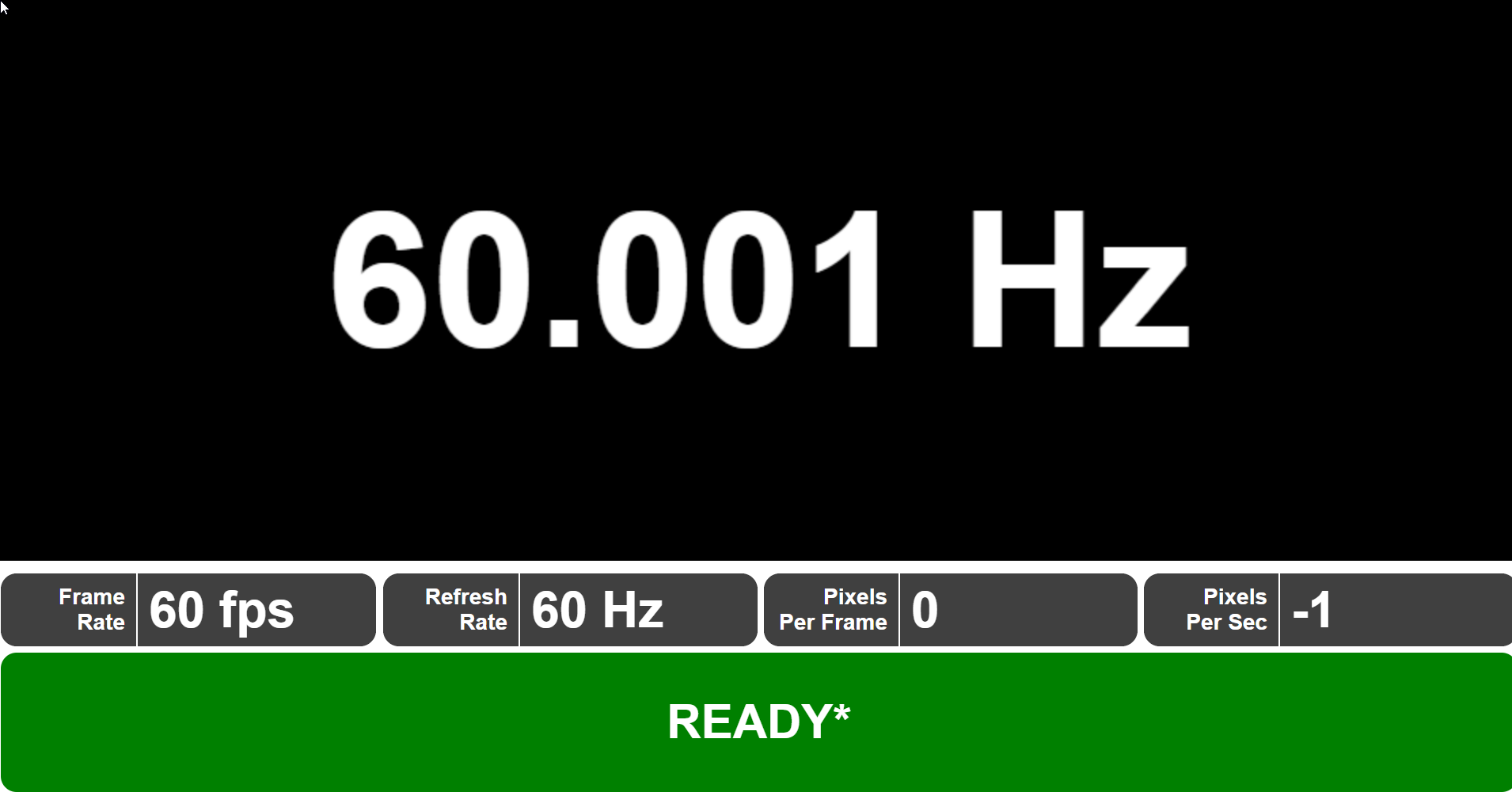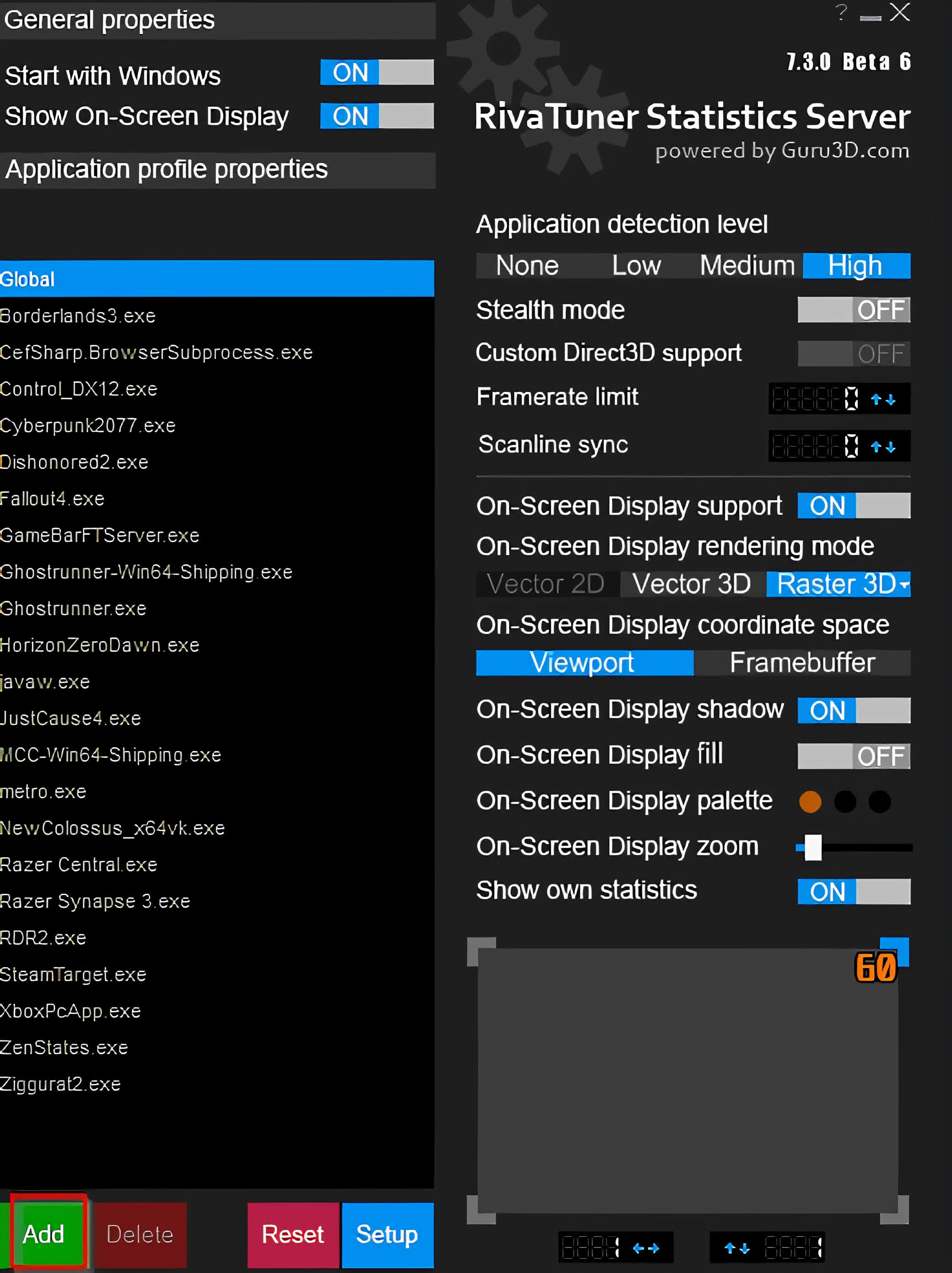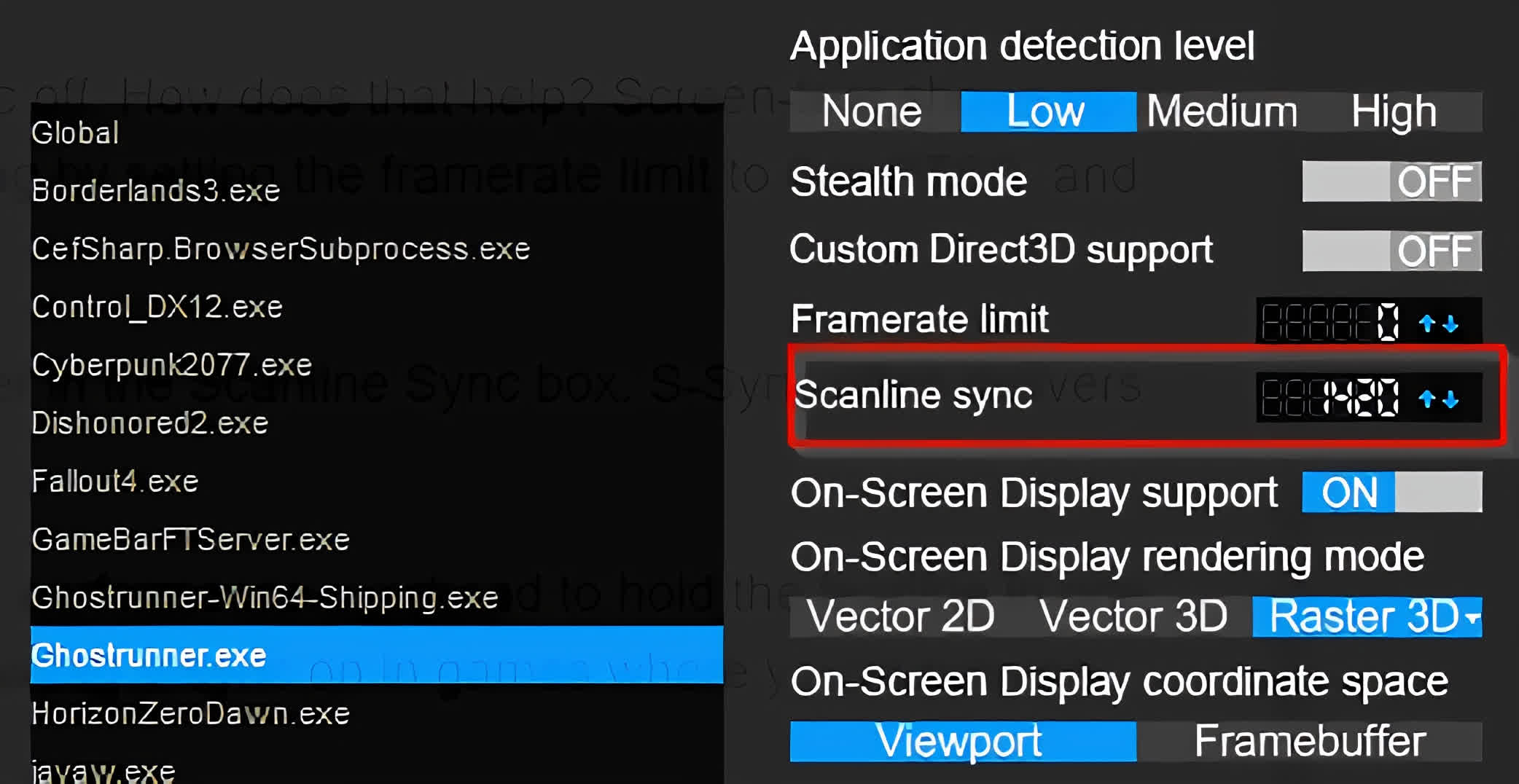Screen Tearing or Input Lag? To Vsync or Not to Vsync?
Screen tear or input lag? To vsync or not to vsync? For the longest fourth dimension, this was an either-or question in the PC gaming infinite. You lot could either have a tear-complimentary, properly frame-paced prototype or low input latency. Yous couldn't have both. Or could y'all?
Well that depends. If y'all already have a modernistic gaming monitor that supports variable refresh rate (FreeSync or G-Sync), yous don't need to utilize this guide at all. But if yous have a regular, fixed refresh charge per unit monitor, or if you lot like to play games on your Television set, this guide will assist you get a tangibly better experience in terms of screen tearing and input lag.
By leveraging millisecond-accurate frame-capping in RTSS (Rivatuner Statistics Server), you can enable low-lag vsync on. The result? Clear, tear-gratis epitome quality and input latency that's up to 50 ms lower than conventional vsync.
This is ane of those rare PC tweaks that can massively improve your gaming feel with minimal tradeoffs and no investment. What the heck is it? And how do you practise it? We'll walk yous through, step by step, in this guide.

What is input latency?
Earlier getting into the how-to, it'southward a good thought to sympathize exactly what we're doing. Low-lag vsync on is a technique that helps to reduce your input latency. What does that really hateful? When you type on your keyboard or move your mouse, there'due south a slight, almost ephemeral lag between the action you take and the output on your brandish. This lag is so minor that it'south measured in milliseconds. When y'all're using your computer to browse or playing casual games, it doesn't tangibly affect the experience.
Also read: How Many FPS Do You Need? Frames Per Second, Explained
Yet, in competitive situations like esports shooters, every millisecond counts. A few ms of input lag could mean the departure between getting that headshot or getting scoped yourself.
All monitors (and TVs) add a sure amount of input lag by default. This is typically dependent on the type of panel being used. High-refresh rate IPS and TN panels deliver the lowest input latency out of the box. Some monitors go as low as 0.5 ms. VA panels tend to accept more input lag, with many panels in the 8-10 ms. TVs (which frequently utilise VA panels) tend to be the worst performers, with some that go as high every bit xxx ms or more.
When vsync is turned off, your GPU sends rendered frames to the display as fast equally it can. Because the display can only output frames so fast (i frame every 16.66 ms for 60 Hz panels), screen tearing happens when a new frame arrives before the previous frame's out of the flick.
When conventional vsync is enabled, the GPU is no longer able to replace the contents of the monitor buffer with a new frame, before the old frame gets its 16.66 ms of fame. This means every frame gets to be displayed in its entirety, eliminating screen tearing. Even so, this forces the GPU to queue upward frames, instead of sending them as fast as possible.
Considering of queuing, conventional vsync tin add as much as 50ms of latency on top of your brandish's baseline input lag. This is where low-lag vsync comes into the picture.
With the low-lag vsync technique, you're essentially capping the framerate (how fast the GPU outputs frames) to a number that'south every so slightly beneath the monitor's refresh rate. This prevents the GPU from sending new frames in earlier the monitor's prepare to output them. The result? A screen-tear free feel with latency that'southward almost as good equally vsync off. Here'south how you can do that...
What you'll demand
Before getting started, you will need to download the latest version of Rivatuner Statistics Server (RTSS). Y'all volition likewise demand an active internet connectedness, so that you lot can access these two web pages for running tests:
- UFO Refresh Rate Test
- vsync Tester
The HPET (Loftier Precision Event Timer) should be enabled in your BIOS. If you've disabled information technology for some reason, please go back in and enable it.
Getting started
The first thing y'all desire to do is determine your monitor'due south bodily refresh rate. If you have a 60 Hz panel, it will likely be very close to 60, but off by a few hundredths of a 2nd. Utilize either the UFO Refresh Charge per unit Test or vsync Tester. If y'all have extra time on mitt, use both to run across if the numbers align.
To examination your monitor's refresh charge per unit, close out all other tabs in your browser and any background processes, so expect for xxx seconds to 1 minute. The test page will prove your display's refresh rate down to several decimal places. Circular it to three digits for the next pace.

Install and run Rivatuner
Once you have Rivatuner installed, make sure to run it with administrative privileges. So, click on the green "Add" button at the bottom left. Browse to the install location for your game. (Note, yous can set this globally, too, we prefer customizing on a per-game basis).
Select the game executable, then add information technology to Rivatuner.

Calculate your frame cap
Take your iii decimal-identify refresh rate, and then subtract 0.01 from it. If your refresh rate is lx.001, for case, your frame cap volition exist 59.991.
In the Rivatuner interface, select the game on the left hand side. Then, type in your frame rate cap in the box side by side to frame rate limit. You've now express your game's frame rate to but under the monitor's refresh rate. Yous'll want to play around with this number a little bit. Some games are more sensitive to frame capping than others: if you feel lots of judder, trying adding to the frame rate cap by increments of 0.002.
Enable vsync and launch
Launch your game, then make sure to enable vsync in settings. If you're unable to practice this, force driver-level vsync from the AMD or Nvidia Control Panel, and that'south it!
With low-lag vsync enabled, you lot'll enjoy substantially better input latency without screen tearing. In that location are a few caveats you'll need to pay attention to. Low-lag vsync works best if your system is capable of running consistently above the monitor's refresh rate. If yous're just striking the lx FPS marking, enabling this could cause additional stutter, whenever frame rates dip below.
Scanline sync: An even better alternative
If you don't desire to play around with fractional frame rate capping, RTSS offers an culling: scanline sync. Scanline sync allows you to control where screen-tearing takes place on screen, with vsync off.
How does that help? Screen-tear shows upwardly as a unmarried line that you can so tuck it into the monitor'southward overscan - at the very summit or lesser of the screen, where it effectively disappears. To enable scanline sync, make sure to disable framerate capping by setting the framerate limit to 0 in RTSS, and disable in-game or commuter-level vsync.

So, decide where yous want the scanline to be. Y'all'll want to experiment with this, but ideally, take your monitor's vertical resolution (1440 if information technology'southward a 1440p monitor), then decrease 10 to 20. Ready this number in the Scanline Sync box. S-Sync often delivers even lower input latency than low-latency vsync.
However, notation that you will need a powerful system (or a less intensive game) to brand the all-time use of information technology. In games where your GPU utilization consistently goes higher up 80 percent, Southward-Sync doesn't have the performance overhead to concord the tear line in i place and information technology can cause massive stuttering.
As a rule of pollex, use S-Sync for less intensive games, where your average frame rate tin can become significantly above 60 FPS. Apply low-lag vsync on in games where y'all're running closer to sixty FPS.
Tweak and get
Certain PC performance tweaks can accept a placebo effect or take tradeoffs, as is the case with resolution scaling. But with low-lag vsync, you really are getting a ameliorate experience with no tradeoff. If you have the performance headroom to spare but yous're non using a gaming monitor with VRR, low-lag vsync on can transform the feel of twitch shooters and competitive games, while getting rid of screen tearing.
There's no special equipment involved and the merely software you need is RTSS. If yous've followed this guide, you should come across a significant improvement in input latency and responsiveness across your game library.
Source: https://www.techspot.com/news/88739-screen-tearing-or-input-lag-vsync-or-not.html
Posted by: malcolmahmand.blogspot.com


0 Response to "Screen Tearing or Input Lag? To Vsync or Not to Vsync?"
Post a Comment